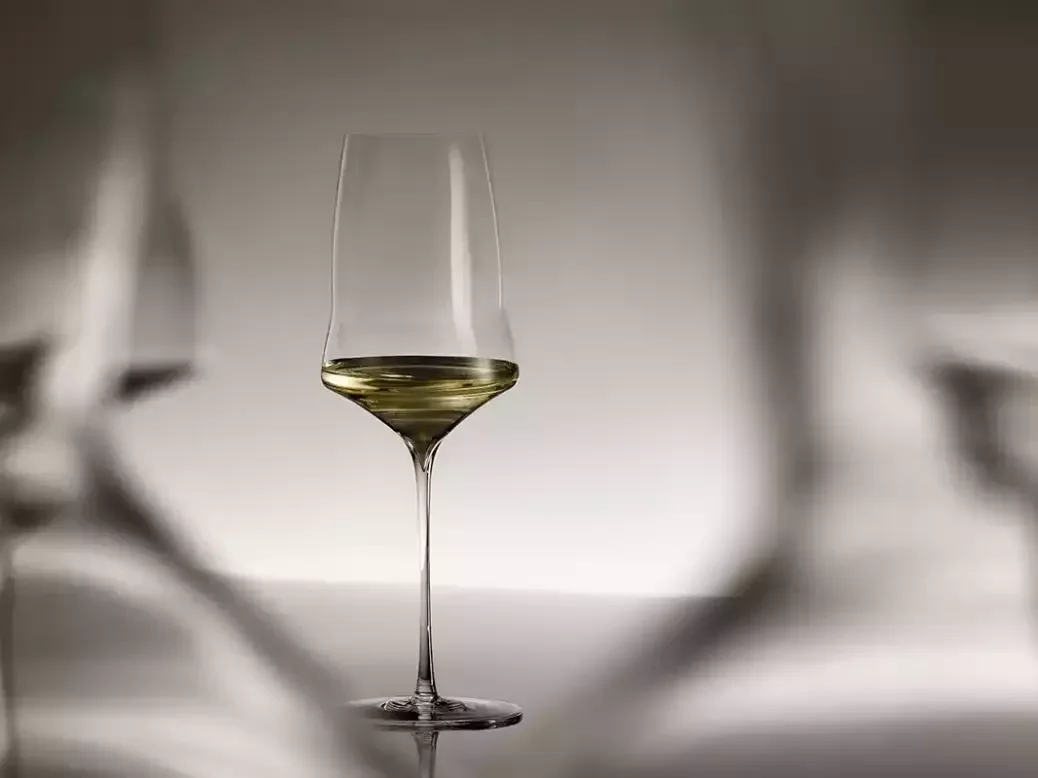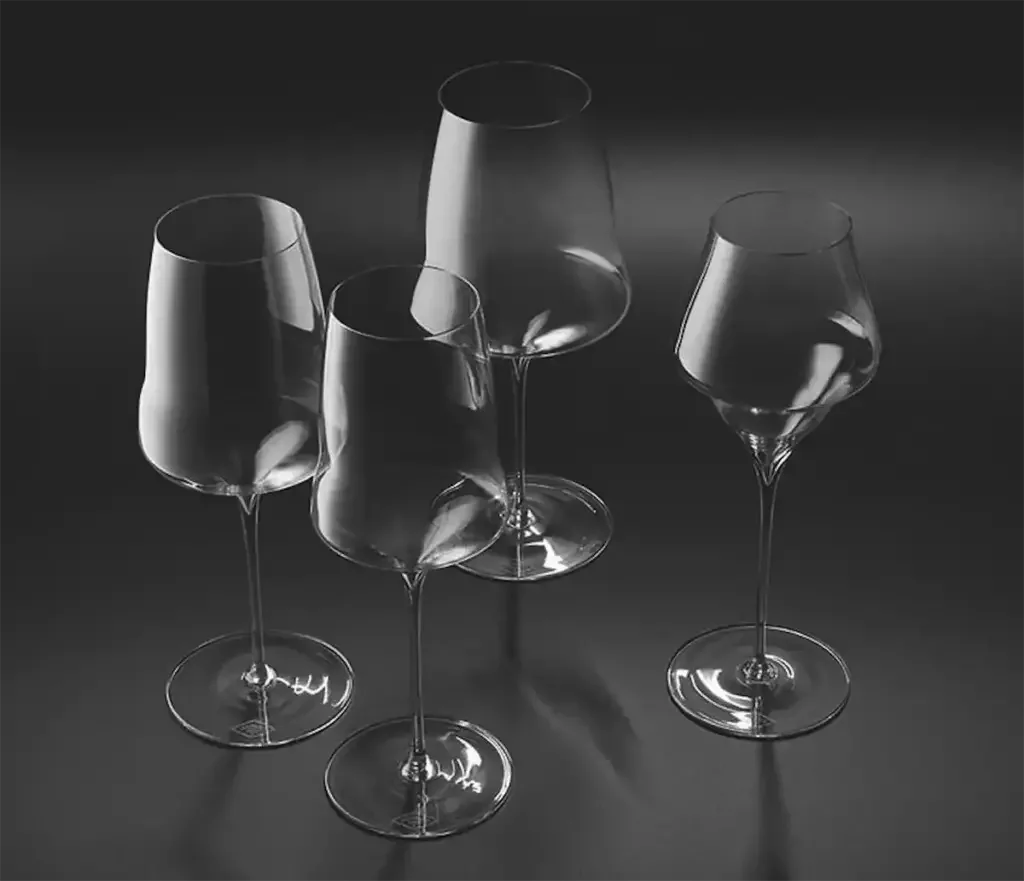
Their pinched shape and lightness may take some getting used to, but Kurt Josef Zalto’s elegant The Josephinenhütte wine glasses are worth the investment, says Anthony Rose.
As much as there’s a good deal of snobbery associated with drinking wine out of “the right wine glass,” by the same token, there is no shortage of inverse snobbery. One British wine writer claims, tongue perhaps half in cheek, that “unpretentious glasses say spontaneity, fun, and pleasure, while delicate expensive ones say one-upmanship and pedantry; they are for the sort of people who say ‘stemware’ instead of glass, or ‘timepiece’ for watch.” Discussing the relative merits of the wine glass may signal the ultimate in pretentiousness to some, but as easy as it is to poke fun at stemware one-upmanship, there are some for whom such discourse is not just worthwhile but is critical in getting the most from a bottle of good wine. I can’t think of any serious wine lover who would feel comfortable drinking his or her Burgundy or Barolo from a Paris goblet.
Aesthetics doubtless play a role, but as well as looking the part, the job of a good wine glass is to enhance aroma, promote aeration, control temperature, and release aromas and flavors—in other words, it’s not snobbery to want to improve your enjoyment of the wine if the glass contributes to the experience, not least when you’ve paid serious money for the wine—and the glass—in question. In my view, investing in a glass befitting a fabulous wine is no more than simple common sense. The better the wine, the better the glass it deserves, and the better the glass you deserve.
With his Josephinenhütte stemware, Kurt Josef Zalto attempts to take the wine glass to the next level. Acknowledging that more than one type of glass is necessary to get the best from your wine, he simplifies matters rather than going down the more-the-merrier Riedel route by creating four glasses: one for white, one for red, one for sparkling, and one universal. Sixth-generation Kurt Josef makes these wine glasses independently of the Zalto glassware company, which was sold in 2009. Josephinenhütte was originally a Silesian glassworks in the Sudeten Mountains, founded in 1842. Combining technical sophistication and aesthetics, Josephinenhütte became one of the most significant glassworks around the world. Kurt Josef Zalto’s mission, along with three friends, was to bring Josephinenhütte back to life “by creating glasses which open up a new dimension in taste through their visionary construction.” That is some claim, so how is it achieved, if at all?
Because of their unconventional design, the Josephinenhütte glasses are known as the glass with the kink. Each glass is mouth-blown, and each stage of the production process requires experience and skill on the part of the master glassworker. Blowing the hot liquid glass into a beechwood mold while rotating the blowpipe, the glassmaker creates a fine, wafer-thin goblet. The stem is stretched out of this goblet with pliers, and a liquid glass mass is applied, from which the base of the glass is crafted with the use of specialized scissors in a rotational movement. While each glass is delicate and thin-walled, it is at the same time surprisingly robust—up to a point; it is still glass after all. The reason for the unconventional kink is to allow the rapid development of aromas in the glass. So, how do they perform?
The unusual pinch, one third of the way up the bowl, takes a little getting used to, but it does synchronize form and function nicely. The most distinctive feature of the Josephinenhütte glasses is their delicate, thin-walled elegance. Once you are accustomed to the idea of picking up a featherweight glass, they do, by amplifying aroma and flavor, significantly enhance the enjoyment of fine wine. Not everyone is in love with them, but reviewers on the website have been largely positive. According to one, “The only downside: impossible to use any other wine glasses after having tried Josephinenhütte.” Not a bad position to be in.
The four Josephinenhütte wine glasses

Josephine No.1
This dainty glass is claimed by Zalto to be ideal for delicate, fruity, and light white wines, as well as lightly chilled red wines, even Port, Madeira, and Sherry, but most of all fine Riesling. I found this glass enhances the youthful fruit sweetness and texture of young dry whites, whereas the universal glass brings out more in the way of aroma and structure. The No.1 glass emphasizes the oak in the aromas of oaked Chardonnay, which is more integrated in the universal glass. Counterintuitively, I find the oak flavor can be more prominent in the universal glass. Trying aromatic reds like young Pinot Noir, the No.1 glass captures aroma well and keeps it tight.
Josephine No.2
This is the “universal” glass, designed for medium-bodied white and red wines. Zalto claims that it “emphasizes subtle notes, as well as the nuances of more complex wines including mature red wines, to which not too much oxygen should be added, and high-quality Vintage Champagnes.” I like this glass a lot. It opens aroma and softens texture in young Pinot Noir, for example, while in other youthful reds, the universal holds the fruit, keeping it sweet and tight. I have tried mature New World reds in this glass, and it tends to hold them tight to its chest, hanging onto their youthful side. This is the closest to a one-size-fits-all glass in the range.
Josephine No.3
This is the big daddy of the family, as demanding of your attention as it is for space in the kitchen glass cupboard. It is grand, and its large surface area is designed to bring out the aromas and flavors of full-bodied, complex red wines through aeration and greater contact with oxygen; bigger whites, too. The No.3 does enhance the aroma of a young wine, but all the more so the secondary and tertiary characteristics of mature reds. Bringing out aroma and relaxing texture, it’s an excellent glass for most reds, highlighting the savory characters, in particular, in top-quality European reds but also the often sweeter fruit of New World reds.
Josephine No.4
The sparkling-wine glass spreads out in the middle of the bowl, allowing maximum release of bubbles to aromatic effect from a more substantial surface area than the No.1, which can also be used for fizz, while the narrowing of the glass toward the rim of the mouth traps the bouquet for greater intensity of aroma. At the same time, the deep point at the bottom of the bowl works to highlight textural finesse. Kurt Josef also recommends it as a glass that is capable of serving double duty for sweet wines such as Riesling Auslese, Eiswein, Tokaji, and Sauternes.






